What Horrifying Events Would Unfold If There Were No Wind on Earth? Would Life on Our Blue Planet Still Exist?
What is Wind? Why Does Wind Occur?
Wind on the Earth’s surface consists of large-scale air movements generated by differences in atmospheric pressure.
The Sun shines on Earth, and its radiation is unevenly distributed across the planet: only half of the Earth is illuminated, and areas near the equator receive more sunlight than the polar regions. This causes variations in air temperature across different regions, leading to different pressures.
In areas with high temperatures, the air expands, resulting in lower air density and pressure. Conversely, in cooler regions, the air contracts, increasing density and pressure. The differences in pressure between these areas create air movement from high-pressure zones to low-pressure zones.
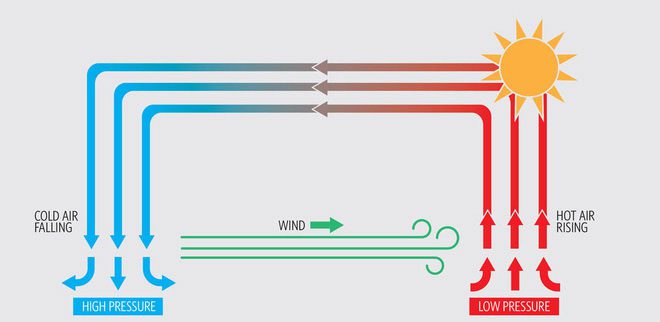
Mechanism of Wind Formation.
The greater this difference, the faster the air moves, resulting in stronger winds, and vice versa.
Additionally, the tilt of the Earth’s axis relative to its orbit around the Sun is also a contributing factor to seasonal wind patterns.
Due to the influence of the Coriolis Effect, caused by the Earth’s rotation, air movement from high-pressure areas to low-pressure areas does not flow straight but forms swirling winds, with different rotational directions in the Northern and Southern Hemispheres.
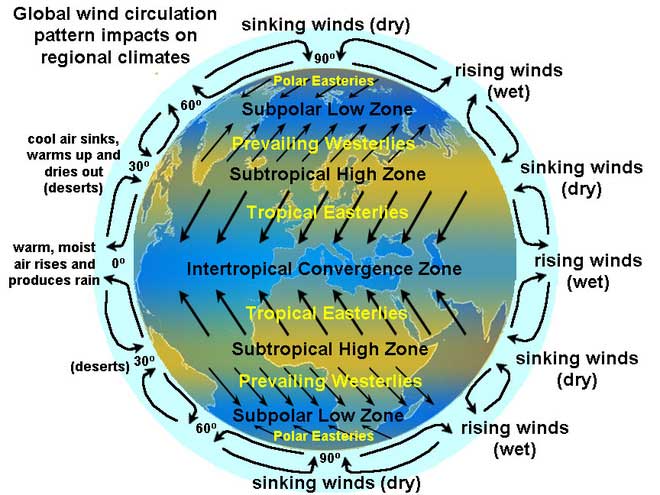
Wind Distribution by Climate Zone.
Wind is characterized by two main factors:
- Speed: the distance air travels in one second (m/s).
- Direction: the point of origin from which the wind blows.
Wind does not have a fixed direction or speed. Wind speeds are always inconsistent, with gusts resulting from rapid changes in direction and speed.
Wind at higher altitudes is stronger than wind at lower altitudes due to the effects of friction. Air currents near the ground are significantly affected by friction, especially in uneven mountainous areas, where swirling movements are easily formed. As altitude increases, the effect of friction diminishes, causing wind speed to increase. Within the same area, air temperatures near the ground also vary, creating zones of different pressures (known as pressure gradients), which in turn enhance wind speeds.
Main Types of Wind
Westerlies arise from the pressure differences between subtropical high pressure and temperate low pressure. These westerly winds are typically moist, bringing abundant rainfall throughout the year.
Trade Winds occur due to pressure differences between subtropical high pressure and equatorial low pressure. These winds are generally dry with little precipitation.
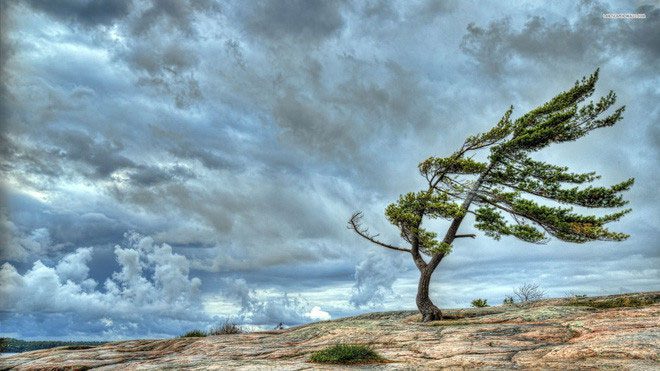
Wind at Higher Altitudes is Stronger than Wind at Lower Altitudes.
Monsoon Winds are seasonal winds that blow in opposite directions during different seasons. The primary cause of monsoon formation is the temperature and pressure differences between land and sea throughout the seasons, as well as between the Northern and Southern Hemispheres.
Monsoon winds typically occur in regions such as South Asia, Southeast Asia, East Africa, Northeastern Australia, and some areas at mid-latitudes: Eastern China, Southeastern Russia, and the Southeastern United States.
Local Winds: include sea breezes, land breezes, and foehn winds.
Sea breezes and land breezes are winds that form along coastlines, changing direction between day and night. In coastal areas, during the day, the land temperature is higher and the pressure lower than over the sea, creating winds that blow from the sea to the land. At night, the land loses heat more quickly than the sea, reversing the temperature and pressure distribution, causing winds to blow from the land to the sea. Sea breezes are moist and cool, while land breezes are dry.
Foehn Winds are winds that become hot and dry as they cross over mountains.
The Importance of Wind on Earth
Wind determines the climate and weather for each region. Winds blowing from the north bring cold air, resulting in cold spells. Conversely, winds from the south carry hot air and raise temperatures in the area.
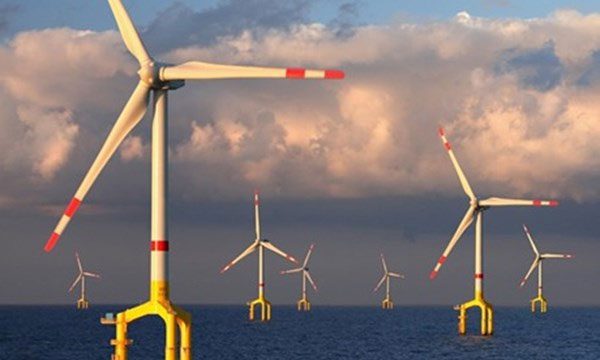
Wind Energy Provides Many Benefits to Humanity.
The direction of the wind determines the moisture content in the air. Winds blowing from the sea will bring moist air inland. In contrast, winds blowing from the land will make the air drier.
Wind offers numerous benefits to humanity: it helps regulate air temperature, assists in pollination, and has many applications in transportation and the energy industry.
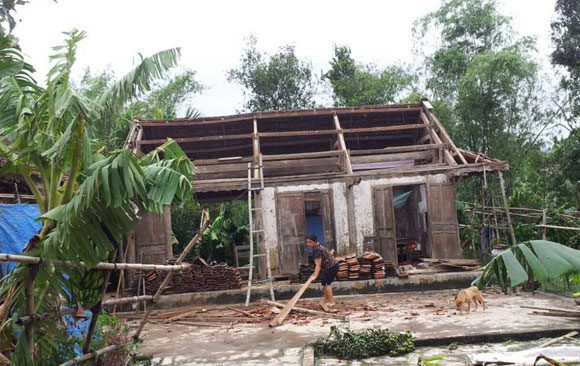
Strong Winds Can Have Devastating Effects.
However, wind can also cause countless harms. Strong winds can be incredibly destructive: uprooting trees, disrupting transportation, tearing roofs off buildings, and even causing fatalities.
What Would Happen If There Were No Wind?
Imagine how Earth and humanity would be if there were no wind.
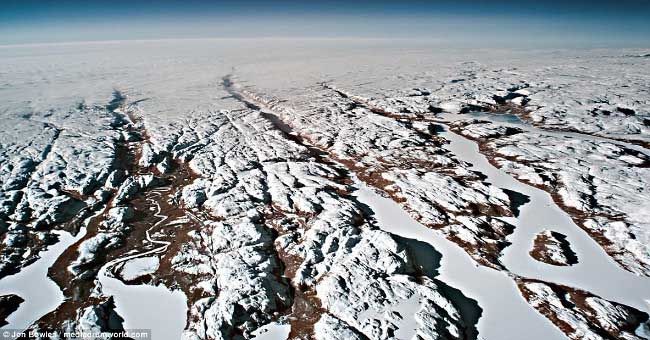
Life on Earth Would Not Survive Without Wind. (Illustration: Internet).
If the wind were to cease, Earth would experience significant temperature differences between the poles and the equatorial region, as well as between land and sea due to uneven thermal distribution. Cold areas would become extremely frigid, while hot areas would become excessively hot, making life impossible on Earth.


















































